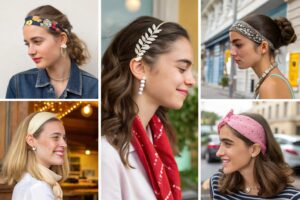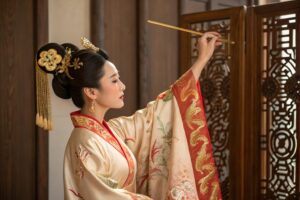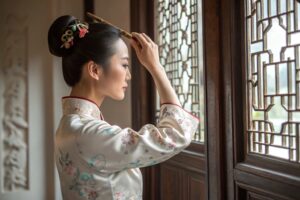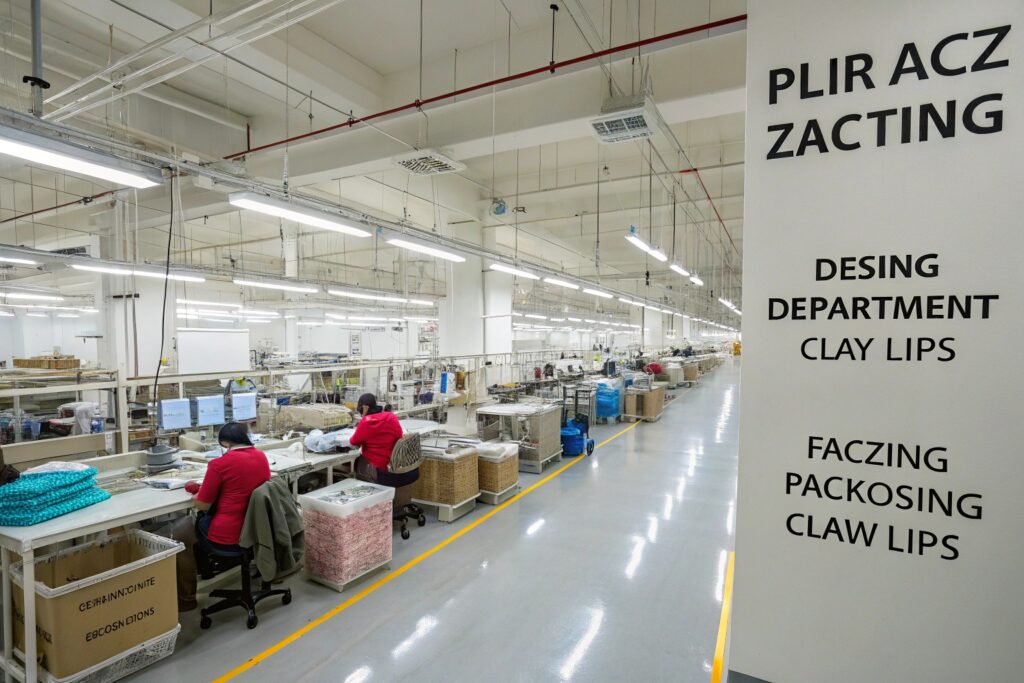From raw materials to final packaging, quality hair accessories don’t just happen—they’re built through a controlled, efficient, and creative factory process. And when that process is fully in-house, your brand wins.
A Chinese hair accessories factory handles end-to-end production through design, molding, material sourcing, dyeing, assembly, quality control, and global shipping—ensuring consistency, speed, and customization at scale.
At HairAcc, we manage every step under one roof. Our team coordinates every claw clip, scrunchie, and hairpin with precision. Here's a look inside how we do it—and why it matters to your brand.
Are hair accessories in demand?
Trends come and go, but hair accessories have never left. They're affordable, functional, and endlessly customizable.
Yes, hair accessories continue to be in high demand worldwide due to their fashion versatility, low cost, and growing popularity across e-commerce platforms.

Why are buyers still ordering millions of hair accessories?
It comes down to three things:
- Styling variety – One person owns many clips, headbands, and ties for different moods.
- Low retail cost – Most items retail under $10, driving impulse buys.
- Social influence – TikTok, Instagram, and Pinterest push daily trends.
Our best-sellers in 2024 include:
- Matte claw clips in soft pastels
- Oversized velvet scrunchies
- Retro padded headbands
- Boho scarf wraps
We receive thousands of bulk orders monthly from Amazon sellers, chain stores, and boutiques around the world.
Which markets are growing fastest?
| Region | Key Drivers | Product Focus |
|---|---|---|
| USA | TikTok trends, fast fashion | Claw clips, mini sets |
| Europe | Eco + minimal styles | Linen headbands, acetate clips |
| Russia | Luxe look, bridal wear | Pearl pins, veils |
| Southeast Asia | Everyday use, gifting | Scrunchies, elastic sets |
At HairAcc, we align our production plan with what’s trending and what sells.
What is the history of Chinese hair accessories?
Hair accessories in China are more than just fashion—they're cultural artifacts, symbols of status, and expressions of beauty dating back thousands of years.
Chinese hair accessories have a long history rooted in dynastic traditions, where hairpins, combs, and headpieces reflected social class, marital status, and artistic craftsmanship.

Where did Chinese hair ornament culture begin?
As early as the Han Dynasty, women used hairpins made of jade, bone, and bronze. During the Tang and Song periods, ornate designs flourished—think phoenix-shaped pins and floral gold combs. Men also wore hairbands and pins to denote scholarly rank.
We take inspiration from these styles in modern production. For example, our “Hanfu Hairpin Series” features:
- Carved resin mimicking ancient jade
- Gold-plated accents inspired by Tang motifs
- Packaging based on traditional silk scrolls
This blend of history and modernity is especially popular among Chinese diaspora and cosplay enthusiasts worldwide.
What role does history play in today’s product design?
Brands often tap into traditional Chinese aesthetics to create storytelling products. We help them by:
- Custom-molding vintage shapes
- Printing traditional patterns on fabric headbands
- Developing gift boxes with cultural themes
Modern meets meaningful—that’s what works.
What type of plastic are hair clips made of?
Durability, color, texture, and eco-friendliness all start with one choice: plastic material.
Most hair clips are made from plastics like acrylic, polycarbonate (PC), acetate, or resin—each offering different textures, costs, and sustainability levels.
![]()
What are the most common materials used?
At HairAcc, we produce claw clips using:
| Material | Features | Price Level | Common Uses |
|---|---|---|---|
| Acetate | Durable, glossy, premium feel | High | Luxury clips |
| Resin | Malleable, color-rich | Medium | Fashion clips |
| Polycarbonate | Heat-resistant, tough | Medium | Functional clips |
| Recycled Plastic | Sustainable, cost-efficient | Medium | Eco-friendly lines |
We also offer glitter-infused, marble-texture, and translucent finishes for added style.
What plastic works best for private label?
- Acetate: For upscale branding—heavyweight and smooth
- Resin: Best for fast-fashion brands—cost-effective, quick molding
- PC: Ideal for sports clips—high grip, high impact resistance
- TPE + recycled plastic: For eco-conscious brands
We help buyers test finishes before they commit—sending multiple material samples per style.
What is the name of the Chinese hair stick?
Hair sticks aren’t just accessories—they’re a symbol of elegance and cultural pride.
The traditional Chinese hair stick is called a "簪子" (zān zi), used historically by women to secure hair buns and decorated to reflect age, status, or occasion.

What makes the "zanzi" special?
In ancient China, receiving a hair stick was part of a coming-of-age ceremony. Designs ranged from simple wood to elaborate jade, ivory, or silver styles.
Today, our "modern zanzi" collection features:
- Carved wood or bamboo bases
- Gold foil inlay or floral resin tops
- Gift packaging with poetry inscriptions
They're especially popular for:
- Hanfu fashion
- Bridal wear
- Museum gift shops
Can we customize hair sticks for global markets?
Yes. We offer:
- Custom wood carving (laser and hand)
- Resin imitation jade
- Silk tassels or pearl drops
- Laser-engraved branding for museums or boutiques
With MOQ starting at just 200 pairs, they’re perfect for souvenir, cultural, and niche fashion stores.
Conclusion
A full-service Chinese hair accessory factory doesn’t just make clips—it delivers design, history, material science, and logistics in one seamless process. From ancient zanzi pins to TikTok-ready claw clips, HairAcc helps you build products that stand out and ship fast.









